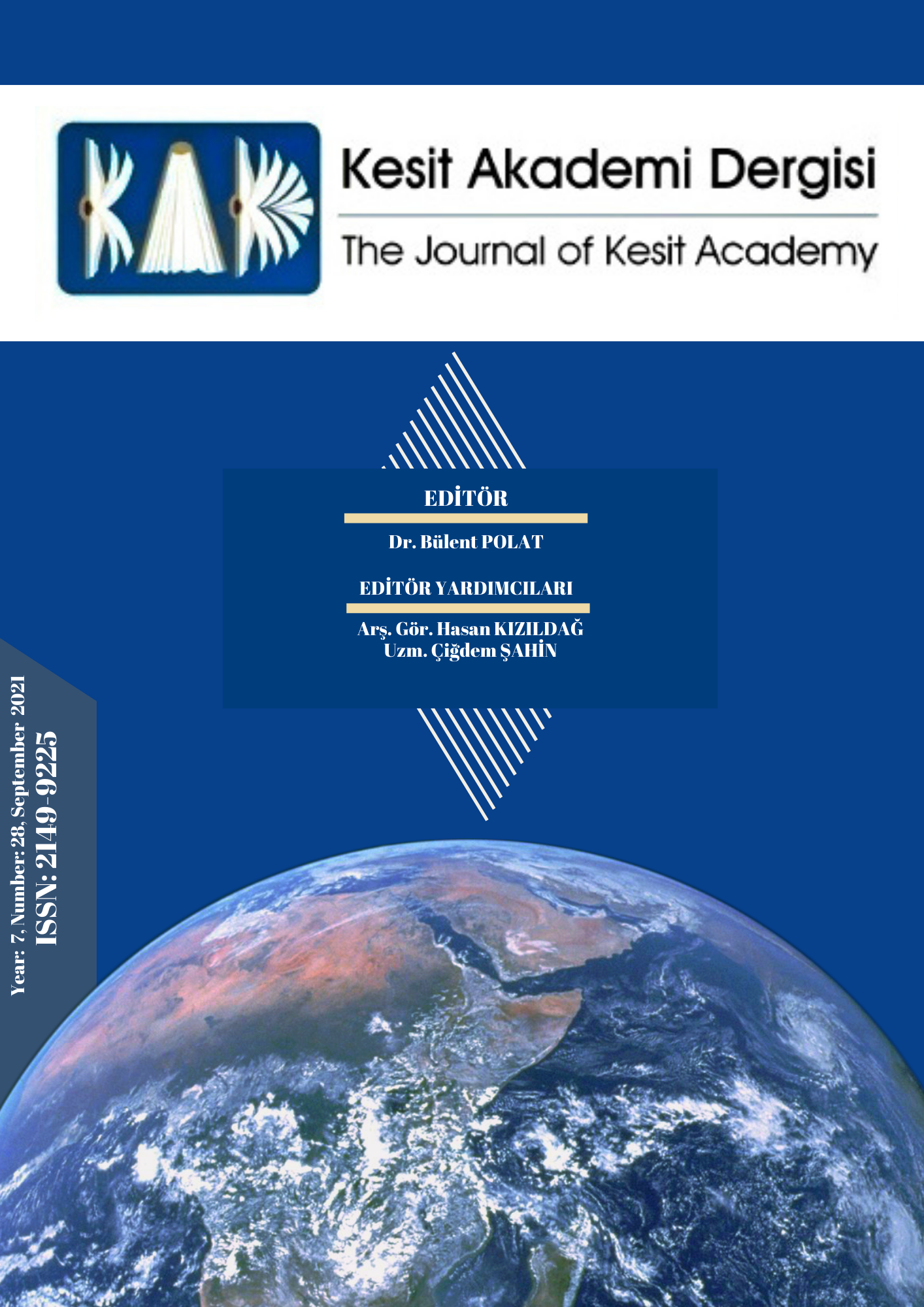SELF-PERCEPTION FROM GOETHE TO NIGARI OR FIGHT OF HUMAN AND THE DEVIL (SELF-JOURNEY IN CONTEXT OF MONOMITE THEORY)
Author :
Abstract
Faust ile aynı dönemde İslami çerçevede yazılmış bir eser olan Nigar-name, insanın içsel yolculuğu ve çeşitli engellerle mücadelesini anlatması bakımından benzerlik göstermektedir. Her iki eserde de insanın tekâmül yolculuğunun benzer yöntemle anlatılması dikkate şayandır. Aynı dönemde birbirinden habersiz bir şekilde yazılan bu iki eserin anlatı düzlemindeki bu benzerliği, insanın inanç ya da içinde bulunduğu toplum fark etmeksizin temelde aynı sorunla baş etmeye çalıştığını ortaya koymaktadır. Bu temel sorun ise Jung’a göre kolektif bilinçdışının bir ürünüdür. İnsanlığın ortak ürünü olan bu sorunlarla başa çıkma şekilleri arketip kavramının temelini oluşturmuştur. İnsanların karşılaştıkları her türlü olaya karşı oluşturdukları çeşitli psikolojik savunma mekanizmaları arketiplerle açıklanmıştır. Bu çalışmada, Goethe ve Nigarî’nin aynı dönemde (1800’lü yıllar) ortaya koydukları iki farklı eserin temelde nasıl bir benzerliğe sahip olduğu incelenmiştir ve insanın dönüşüm yolculuğu J. Campbell’in Monomit Kuramı üzerinden açıklanarak arketip kavramının farklı kültürlerde benzer yaratmaların meydana çıkışındaki rolü üzerinde durulmuştur. Bu, Doğu ve Batı kültürü bağlamında insanlığın ayrılmasının temel yanılgısını anlamamıza yardımcı olan bir çalışmadır. Aynı yıllarda birbirini tanımayan iki farklı coğrafyada iki insan - iyi bir Hristiyan ve iyi bir Müslüman; bir Alman ve bir Türk - aynı insani sonuca varırlar: İnsanın temel savaşı Şeytan'ladır.
Keywords
Abstract
Nigar-name, a work written in an Islamic framework at the same time as Faust, is similar in terms of describing the inner journey of man and his struggle against various obstacles. It is noteworthy that both works describe the evolutionary journey of man. This similarity in the narrative plane of these two works, which were written without knowing each other in the same period, reveals that human beings basically try to cope with the same problem, regardless of belief or society. This fundamental problem is, according to Jung, a product of the collective unconscious. The ways of dealing with these problems, which are the common product of humanity, formed the basis of the archetype concept. Various psychological defense mechanisms created by people against all kinds of events they encounter are explained with archetypes. In this study, the similarity of the two different works of Goethe and Nigari in the same period is examined and the role of the concept of archetype in the emergence of similar creations in different cultures is emphasized by explaining the transformation journey of human through J. Campbell's Monomite Theory. This is a study that helps us understand the fundamental fallacy of the separation of Humanity in the context of Eastern and Western culture. Two people in two different geographies, who did not know each other in the same years - a good Christian and a good Muslim; one German and one Turk - arrive at the same humane conclusion: Man's fundamental fight is with the Devil.
Keywords
- Andrews, W. G. (2005). The age of beloveds: Love and the beloved in early-modern Ottoman and European culture and society. University of Washington Press.
- Campbell, J. (2010). Kahramanın sonsuz yolculuğu (Çev.: S. Gürses). Kabalcı Yayınevi.
- Gökcan, M. (2018). Faust ve Şeyh San’an hikâyelerinde varoluşsal yolculuk. ZfWT, 10 (2), 15-32.
- Güldürmez, S. (2017). Faust’u gölgesinden seyretmek yahut modernizm bağlamında Faust’a dair bazı dikkatler. Turkish Studies, 12 (15), 321-344.
- Güzel, C. (2014). Monomit teorisi bağlamında Bayan Toolay destanı. TÜBAR, 36, 191- 205.
- Hakverdioğlu, M. (2017). Nigar Hanım ve Mir Hamza’nın Nigarnamesi. Uluslararası Türk Dili ve Edebiyatında Kadın Sempozyumu (460-500), Amasya.
- Holbrook, V. (1996). Alegorinin ölümü hüsn ü aşkın özgünlüğü. Defter 27.
- Jung, C. G. (2003). Dört arketip. Metis Yayınları.
- Karadayı, O. N. (2017). Nigarname’de aşkın seyri. İlahiyat Tetkikleri Dergisi, 48, 161-194.
- Kayaokay, İ. (2014). Fuzuli’nin Leyla ile Mecnun mesnevisinin arketipsel sembolizm bağlamında çözümlenmesi. Akademik Sosyal Araştırmalar Dergisi, 7, 337-351.
- Küçük, O. N. (2007). Mevlana’da benliğin dönüşümü: Sülûk” [Doktora Tezi]. Ankara Üniversitesi.
- Memmedli, N. (2012). Mir Hamza Seyid Nigarî, nigar-name. İlm ve Tahsil.
- Menderesoğlu, İ. (2005). Faust. Cümle Yayıncılık,.
- Öztekin, N. (2007). Mukayeseli edebiyat araştırma tarihi ve yöntem. Turkish Studies 2 (4), 672-679.
- Taşlıova, M. (1999). Karabağlı Hamza Nigârî ve nigâr-nâme mesnevisi. Millî Folklor, 11





